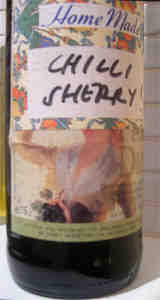Choosing and cultivating the best autumn raspberries
Posted by Fiona Nevile in Allotment, Fruit | 13 commentsI’m a raspberry lover. When the dessert trolley rolls up in a restaurant I ignore the profiteroles and sticky meringues and go for raspberries sprinkled ideally with a little vanilla sugar.
My passion for raspberries has led me astray recently. Our allotment site in Newmarket is a raspberry lovers haven. There is a narrow path that’s a shortcut to our plot. Here bushes laden with fruit tempt me. These bushes are so fructulent that the branches stray across the path – waving, tempting and teasing. I have to admit that I have snaffled on odd on or two – delicious naughty treats.
We plan to grow raspberries on our sunny allotment plot. We do grow them at home but our kitchen garden doesn’t have much sun to give them the warmth that they need. Autumn fruiting is a bit of a misnomer as they can fruit from July up until the first frosts.
The flavour of summer fruiting varieties is rather thin and watery compared with autumn fruiting ones. We had no idea until the day that we harvested our first berries – the expectation and waiting for the fruits to ripen made the disappointment huge. Gradually over the years I’ve replaced the summer fruiting raspberries with autumn fruiting varieties.
About ten years ago I planted Autumn Bliss and this spring added Polka – a new variety that fruits for longer than Autumn Bliss and bears more fruit. Apparently Polka has a stronger flavour too.
I thought that I do a bit of research before I ordered raspberry canes for the allotment. The variety that got the most recommendations for taste was Joan J (launched in the UK in 2002 – so I’d not heard of this one). Imagine my delight when I discovered that this is the best variety for flavour and crop chosen by gardening Which? Incidentally Polka came second in the flavour stakes and Autumn Bliss fourth.
The Gardening Which? article also discussed the benefits of double cropping. This technique gives a crop in summer and another in the autumn. Conventionally the autumn raspberry canes are cut to ground level in February. As primocanes they fruit on wood grown the same year and they will give an autumn harvest.
The double cropping method is simple. Leave the canes uncut in the winter to allow an early crop of fruit. When these canes have stopped fruiting cut them to the ground – these will be browner than the younger green canes so should be easy to spot. The younger canes will crop in the autumn.
The magazine trials indicate that the double cropping method produced a larger harvest overall with the exception of ‘Brice’.
The results for the double cropping experiment are exciting. 10 canes of Autumn Bliss (always a bit of a tardy fruiter here) produced just 2.5 kilos using the conventional cut canes down in the winter method. The double cropping gave a harvest of 5.5 kilos.
The results for Polka and Joan J were less dramatic but still significant. And the thought of guzzling these delicious raspberries in summer has my mouth already watering at the prospect.
I was concerned that double cropping might deplete the lifespan and resources of the canes. There is no evidence to suggest this an no extra feeding is necessary. A handful of general purpose fertiliser is recommended when planting with an annual does of sulphate of potash in the spring. We also mulch the bases of the canes with well rotted compost in late spring.
I’ve ordered12 Joan J canes for the allotment and will try the double cropping method as soon as they are up and running. Meanwhile, back at the cottage I’ll definitely be practicing double cropping on Autumn Bliss and Polka next year.
You can buy Joan J online raspberry canes online at Thompson and Morgan and Unwins.
.
Leave a reply







The best thing about Autumn raspberries is that they do not need staking
Hi Thrifty household,
A variety commended for growing in large pots is Glen Coe a clump forming floricane or primocane I can’t remember which but is advertised as being able to produce huge quantities of dark almost black fruit and is especially tasty.
Though it is expensive, shop round on the net for it. However it does grow in a different manner from ordinary raspberry canes and produces more canes per plant and more fruit.
Ps that should read : we have dug them up! And burnt them.